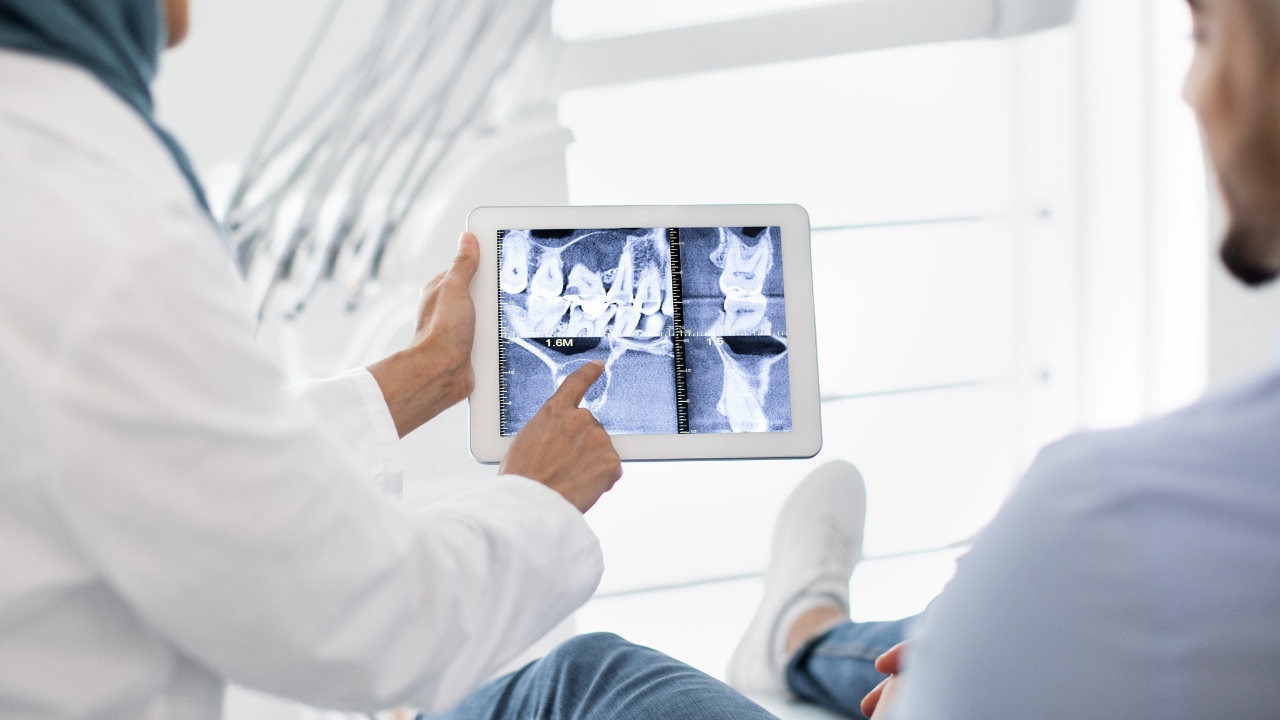
Top 5 benefits of digital dentistry
Posted March 4, 2023 by Haresh SavaniDigital dentistry is a relatively new field that combines advanced technology with traditional dental practices. This innovative approach has revolutionized the way dental procedures are carried out, with numerous benefits for both patients and dental professionals. In this article, we will discuss the top 5 benefits of digital dentistry.
I. Introduction
A. Explanation of Digital Dentistry
Digital dentistry refers to the use of advanced technology in dental procedures, from diagnosis to treatment planning and implementation. This includes the use of computer-aided design and manufacturing (CAD/CAM), intraoral scanners, and 3D printing.
B. Importance of Digital Dentistry
The importance of digital dentistry lies in its ability to enhance accuracy, efficiency, and patient experience. With the help of advanced technology, dental professionals can provide more precise diagnoses, treatment plans, and outcomes. Patients, on the other hand, benefit from reduced treatment time, increased comfort, and better communication with their dentist.
II. Improved Patient Experience
A. More Accurate Diagnoses
One of the most significant benefits of digital dentistry is the ability to make more accurate diagnoses. Intraoral scanners and 3D imaging provide a clear view of the patient's teeth, allowing for better detection of issues such as cavities, fractures, and gum disease. This, in turn, enables dental professionals to provide more precise treatment plans.
B. Reduced Treatment Time
Digital dentistry has also reduced treatment time for patients. CAD/CAM technology allows for the creation of dental restorations such as crowns and bridges in a matter of hours, eliminating the need for multiple appointments. This means less time off work or school and faster resolution of dental issues.
C. Increased Comfort
Another advantage of digital dentistry is increased patient comfort. Intraoral scanners eliminate the need for messy impressions, reducing discomfort for patients. Additionally, digital x-rays use lower levels of radiation than traditional X-rays, ensuring patient safety.
III. Greater Efficiency for Dental Professionals
A. Reduced Chance of Error
Digital dentistry has significantly reduced the chance of error in dental procedures. With the use of CAD/CAM technology, dental restorations are precisely fabricated, reducing the chance of misfit or damage. Similarly, intraoral scanners ensure accurate measurements, eliminating human error.
B. Enhanced Communication
Digital dentistry has also enhanced communication between dental professionals. With the use of digital records and images, dental professionals can share patient information and treatment plans more efficiently. This has improved the quality of care and reduced the risk of miscommunication.
C. Improved Record Keeping
Digital records have also improved record-keeping in dental practices. With the use of electronic health records (EHRs), dental professionals can easily access patient information and medical history.
IV. Cost-Effective Solution
A. Less Material Waste
Digital dentistry has also proven to be a cost-effective solution. With the use of CAD/CAM technology, dental professionals can create dental restorations with minimal material waste. This not only reduces costs for the patient but also benefits the environment by minimizing waste.
B. More Precise Treatment Planning
Digital dentistry allows for more precise treatment planning, reducing the need for additional procedures and treatments. This, in turn, reduces costs for the patient and saves time for both the patient and the dental professional.
C. Reduced Need for Retreatment
With more accurate diagnoses and treatment planning, digital dentistry has reduced the need for retreatment. This eliminates the need for additional appointments and procedures, saving patients time and money.
V. Advanced Technology for Better Outcomes
A. Intraoral Scanners
Intraoral scanners are one of the most significant advancements in digital dentistry. They provide a 3D view of the patient's teeth and gums, enabling dental professionals to make more accurate diagnoses and treatment plans. Additionally, they eliminate the need for messy impressions, reducing patient discomfort.
B. Computer-Aided Design/Computer-Aided Manufacturing
CAD/CAM technology allows for the creation of dental restorations such as crowns and bridges with precision and efficiency. With the use of digital imaging, dental professionals can create restorations that fit perfectly, reducing the chance of misfit or damage.
C. 3D Printing
3D printing has revolutionized the way dental professionals create dental restorations. With the use of digital models, dental professionals can create restorations that are more accurate and efficient. This, in turn, reduces costs and saves time for both the patient and the dental professional.
VI. Enhanced Patient Education
A. Visual Aids
Digital dentistry has also improved patient education. With the use of digital imaging and 3D models, dental professionals can visually explain diagnoses and treatment plans to patients. This, in turn, increases patient understanding and involvement in their treatment.
B. Interactive Treatment Planning
Digital dentistry allows for interactive treatment planning, which enables patients to visualize their treatment plan before it is implemented. This, in turn, reduces patient anxiety and increases patient satisfaction.
C. Improved Treatment Outcomes
Digital dentistry has also improved treatment outcomes for patients. With the use of advanced technology, dental professionals can provide more precise and efficient treatment plans. This, in turn, increases the chances of successful treatment outcomes.
VII. Conclusion
A. Recap of Benefits
In conclusion, digital dentistry has numerous benefits for both patients and dental professionals. From improved patient experience to greater efficiency and cost-effectiveness, digital dentistry has revolutionized the way dental procedures are carried out.
B. Future of Digital Dentistry
The future of digital dentistry looks promising, with the continuous advancements in technology. As technology improves, dental professionals will be able to provide even more accurate and efficient treatment plans.
C. Call to Action
If you are a dental professional, consider incorporating digital dentistry into your practice. If you are a patient, ask your dental professional about digital dentistry and its potential benefits for you.
VIII. FAQs
Q1: Is digital dentistry covered by insurance?
A: While digital dentistry is becoming more common, insurance coverage varies depending on the procedure and the insurance plan. Some insurance plans cover digital X-rays, while others may not cover CAD/CAM technology. It is important to check with your dental insurance provider to understand what procedures are covered under your plan.
Q2. Are digital X-rays safer than traditional X-rays?
A. Digital X-rays are considered safer than traditional X-rays because they emit less radiation. Digital X-rays also provide better image quality, making it easier for dentists to diagnose dental problems.
Q3. Does digital dentistry cost more than traditional dentistry?
A. The cost of digital dentistry varies depending on the procedure and the dental practice. In some cases, digital dentistry may be more expensive than traditional dentistry because of the cost of the technology. However, digital dentistry can also save time and reduce the number of dental visits needed, potentially saving money in the long run.
Q4. How long does it take to create a dental restoration using CAD/CAM technology?
A. Creating a dental restoration using CAD/CAM technology typically takes less time than traditional methods. The process involves taking a digital impression of the patient's teeth, designing the restoration using computer software, and then milling the restoration using a machine. The entire process can be completed in a single dental visit, eliminating the need for multiple appointments.
Q5. Can digital dentistry be used for all dental procedures?
A. While digital dentistry has many advantages, it may not be suitable for all dental procedures. For example, some complex dental procedures may require a combination of traditional and digital methods. Additionally, some dental practices may not have the necessary equipment or expertise to offer digital dentistry services.
Leave a Comment
Your email address will not be published. Required fields are marked *


